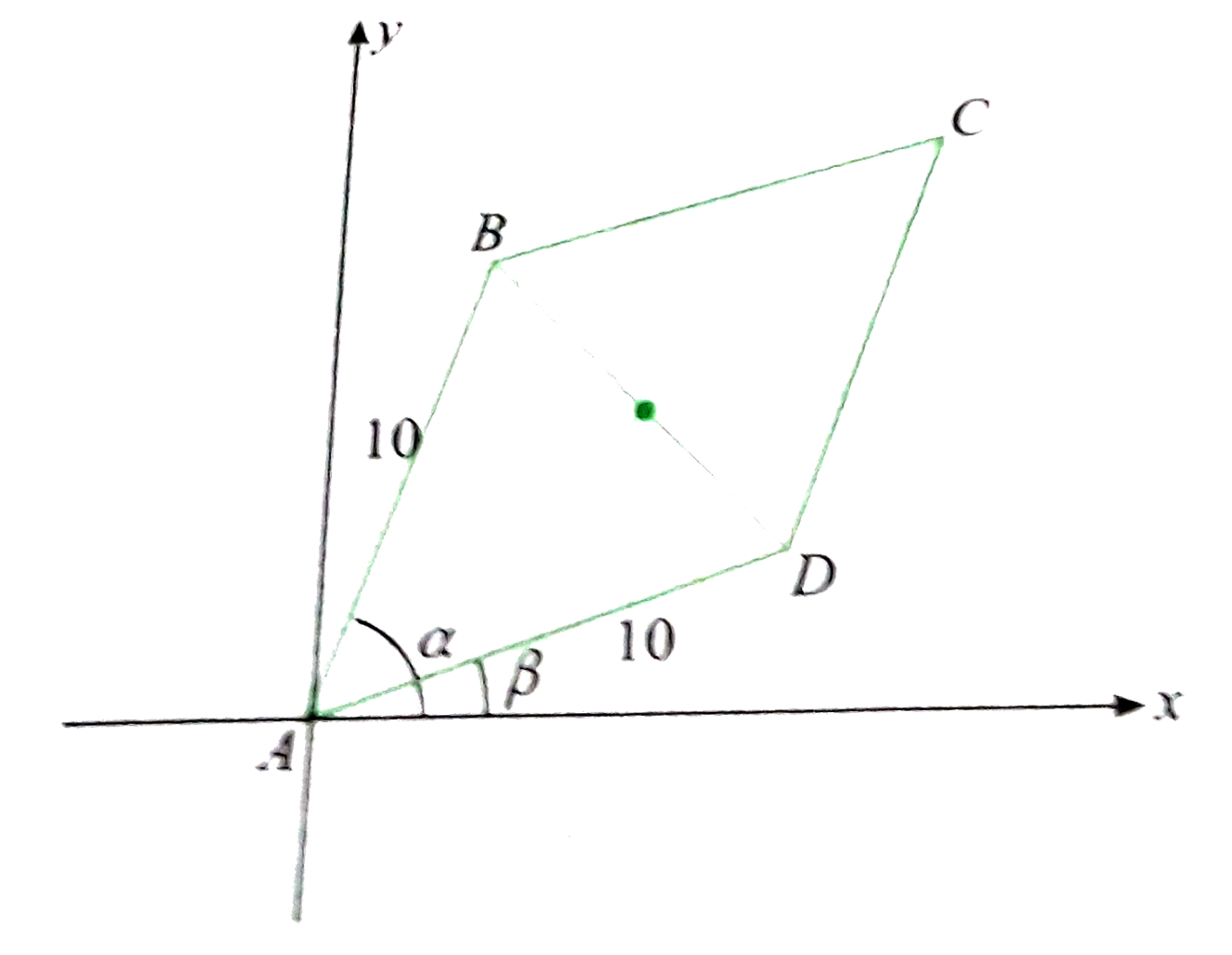For a given point A(0,0), ABCD is a rhombus of side 10 units where slope of AB is and slope of AD is . The sum of abscissa and ordinate of point C (where C lies in first quadrant) is
The correct Answer is:

In the figure,
Coordinates of point B
Also,
coordinates of Point D
Diagonals of rhombus bisect. So, midpoint of BD is which is midpoint of AC. therefore, coordinates of C are .
Topper's Solved these Questions
- BOOK - CENGAGECHAPTER - COORDINATE SYSYEM EXERCISE - Exercise 1.55videos
COORDINATE SYSYEM
- BOOK - CENGAGECHAPTER - COORDINATE SYSYEM EXERCISE - Exercise 1.69videos
COORDINATE SYSYEM
- BOOK - CENGAGECHAPTER - COORDINATE SYSYEM EXERCISE - Exercise 1.310videos
COORDINATE SYSYEM
- BOOK - CENGAGECHAPTER - COORDINATE SYSTEMEXERCISE - Multiple Correct Answers Type2videos
COORDINATE SYSTEM
- BOOK - CENGAGECHAPTER - CROSS PRODUCTS EXERCISE - DPP 2.213videos
CROSS PRODUCTS
Similar Questions
Knowledge Check
- Question 1 - Select One
Point P(−3,−4) lies in which quadrant?
AFirstBSecondCThirdDFourth. - Question 2 - Select One
Point P(3,4) lies in which quadrant?
AFirstBSecondCThirdDFourth. - Question 3 - Select One
Point Q(−3,−4) lies in which quadrant?
AFirstBThirdCSecondDFourth.
If the points (4,3) and (cosθ,sinθ) lies same side of the line x+y−1=0 ,then θ lies in which Quadrant?
View SolutionFind the equation of the curve passing through the point (0,0) and whose slope of the normal at a point (x, y) is equal to the sum of the ordinate and the product of the abscissa and ordinate of that point.
View SolutionThe slope of the tangent to the curve y=x2−x at the point where the line y = 2 cuts the curve in the first quadrant, is
View SolutionThe slope of normal at any point P of a curve (lying in the first quadrant) is reciprocal of twice the product of the abscissa and the ordinate of point P. Then, the equation of the curve is (where, c is an arbitrary constant)
View SolutionAt any point on a curve , the slope of the tangent is equal to the sum of abscissa and the product of ordinate and abscissa of that point.If the curve passes through (0,1), then the equation of the curve is
View Solution

